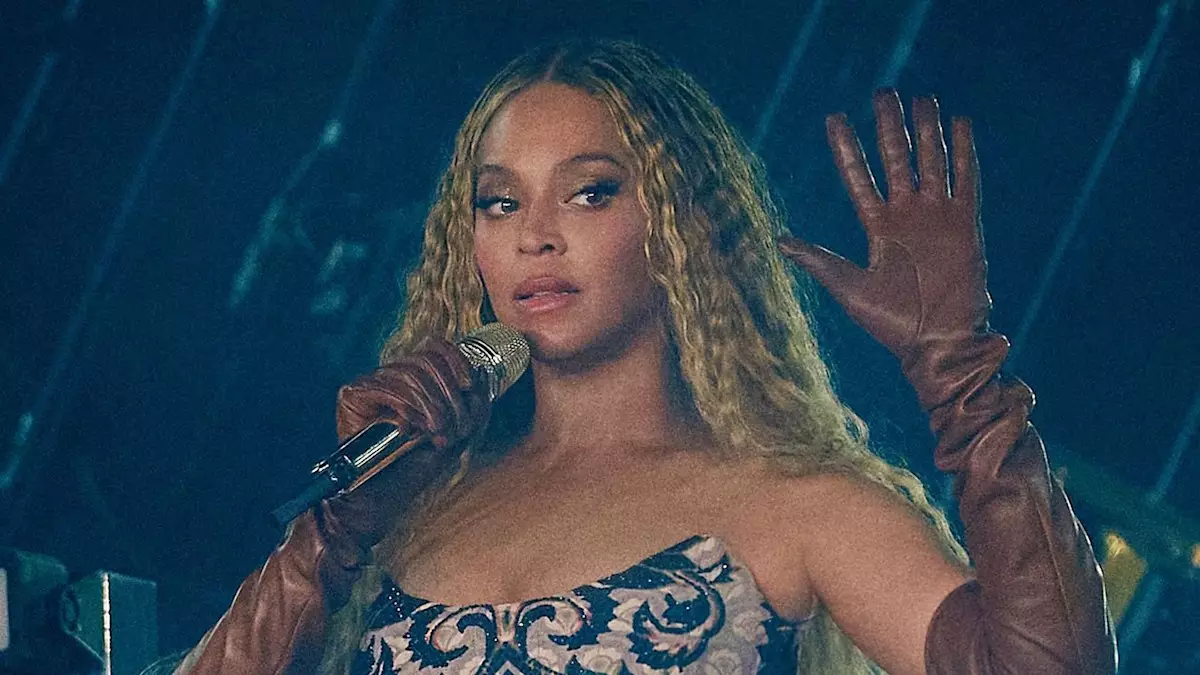Beyoncé’s Cowboy Carter Tour has swiftly established itself as a milestone in live music performance. Drawing from an ambitious setlist that encompasses nearly every album in her illustrious career, the tour encapsulates the artist’s evolution while pushing the boundaries of concert theatrics. Yet, even the most meticulously crafted shows are not immune to the unpredictable nature of live performance. The recent incident at Houston’s NRG Stadium—Beyoncé’s hometown—highlighted the delicate balance between spectacle and safety that high-stakes productions must maintain.
Beyoncé’s signature finale—where she flies above the audience in a prop car, suspended by wires—is a dazzling highlight meant to symbolize the fusion of art, technology, and intimate fan connection. This moment, designed for adrenaline and awe, instead became a trial of composure when the apparatus malfunctioned and the prop car began tipping alarmingly to one side. The singer’s quick response and calm demeanor amid potential danger was not just a testament to her professionalism; it raised critical questions about the risks that accompany high-concept performances.
Managing Crisis Under the Spotlight
When the car started leaning dangerously, Beyoncé’s instinctive commands—“Stop… stop, stop, stop, stop”—were a rare glimpse into the vulnerability of even the most seasoned entertainers. Her pause in mid-performance to address the malfunction revealed a human side that’s often masked behind layers of production. While the audience shouted encouragements and maintained solidarity, it was Beyoncé’s leadership on stage that prevented panic and maintained order.
This incident starkly contrasts the polished image superstar tours project. It reminds us that behind the spectacle lie intricate mechanics and safety protocols that must flawlessly function to protect performers. The artist’s decision to halt the performance rather than continue obliviously shows a respect for the real human risk involved, implicitly urging a conversation about safety standards in tours where stunts take center stage.
Audience Reaction: From Fear to Fascination
Fan response captured on social media revealed a blend of anxiety and admiration. Many initially assumed the tipping was part of the show, lauding it as an artistic flourish that heightened the drama. When it became clear the malfunction was genuine, reactions transitioned from awe to concern. Comments ranged from playful chiding—telling Beyoncé she should “stay on the ground”—to relief that her quick thinking averted disaster.
This duality in audience emotion underscores an important dynamic in live entertainment: the interplay between spectacle and genuine risk creates a complex emotional experience. The glitch, while dangerous, paradoxically reinforced the authenticity of the performance. It showed that despite extensive rehearsals and technical expertise, the raw unpredictability of live shows keeps both artist and audience on edge.
The Broader Triumph of a Monumental Tour
Despite this hiccup, the Cowboy Carter Tour has been an unmitigated commercial and artistic triumph. With nearly $270 million grossed from just 23 stops and a meticulously curated setlist that highlights the breadth of Beyoncé’s musical journey, the tour exemplifies how an artist can remain culturally relevant while innovating live entertainment. The inclusion of her daughters, Blue Ivy and Rumi, in prominent roles adds a personal dimension that deepens the emotional connection felt by viewers.
The presence of special guests like Miley Cyrus and Jay-Z also enriches the tour’s narrative, reflecting Beyoncé’s collaborative spirit and status within the industry. Each element—from the choreography to the elaborate staging—works cohesively to produce more than a concert: it is a multi-dimensional experience that challenges the conventional limits of performance.
Performing on the Edge: Innovation Versus Safety
While fans and critics alike praise Beyoncé’s resilience and showmanship, the wobbly car incident must serve as a cautionary tale. In the quest to elevate performances through technological innovation, artists and production teams must never lose sight of the fundamental priority: safety. The spectacle should never overshadow the wellbeing of the performer or crew.
This event has opened a valuable dialogue about how artists like Beyoncé, who push the envelope, can do so responsibly. It confirms that while grounding artistry in breathtaking visuals is vital, ensuring multiple failsafes and rehearsed contingencies is essential. Beyoncé’s grace under pressure is remarkable, but reliance on such composure shouldn’t be a substitute for stringent safety measures.
The Cowboy Carter Tour is emblematic of an era where music and stagecraft intersect like never before. This incident, while unsettling, also reaffirms that human brilliance and imperfection coexist, making live performances compelling, unpredictable, and deeply relatable.

